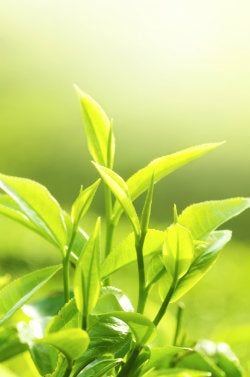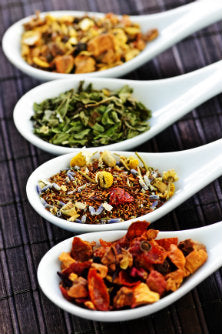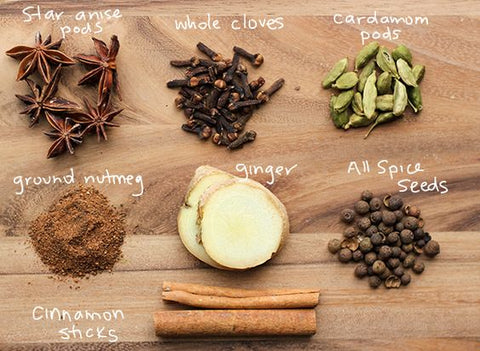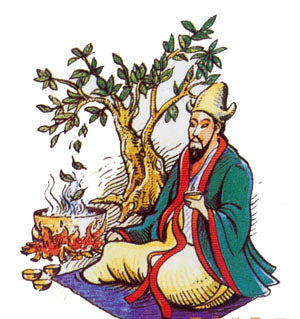Tea 101 | Road Map For Your Tea Journey
It's a topic that could and perhaps should take all day. Like the drink itself, discussing tea is a leisurely activity with many complex detours along the way, even for such a straightforward and much-discussed topic.
Approaching tea, one needs to know a few key things:
- Tea in the historical narrative: what it is and why it matters.
- Tea in its extraordinary variety: true teas, new teas, and everything in between.
- Tea as a cultural capstone: what does it mean for different people and cultures?
- Tea as a subject: discussing tea in a knowledgeable way
- The art of tea: how to cultivate your approach to tea, and how to serve it.
Tea: A Brief History
A cash crop, cultural institution, hobby, passion, and source of nourishment and healing: the Camellia sinensis plant and its derivatives are an empire unto themselves. There is no inhabited land where the drink tea is not known, and searching back through history one would predate just about every other modern luxury before they saw a time before this humble plant's prominence. Tea is elegant, too. Elegant in the scientific and sociological sense that implies simplicity in sophistication.  For a great many: tea is something mother, father, auntie, uncle, grandma, and grandpa used to brew and drink, allowing little ones sips, perhaps sweetened for them with sugar or honey.
For a great many: tea is something mother, father, auntie, uncle, grandma, and grandpa used to brew and drink, allowing little ones sips, perhaps sweetened for them with sugar or honey.
Tea as an industry stands close to unparalleled in modern history for its size, universality, and importance. It is the world's second most drunk beverage after plain water. (Source Link) It had been the inspiration for high art, the motivation for exploration and travel, the cause of wars. In America, it has been the quiet cornerstone of health and mindfulness; a revolution that has come to to nutrition, health, and lifestyle industries. Millennials in the United States make up the vast majority of tea consumers. Shops and specialty outlets are more and more common. America is now the world's second largest tea importer after Russia. Source Lin
So what does tea mean for people?
The tradition of tea drinking is closely associated with leisure. A break. A moment to oneself and those nearest and closest. Among strangers, the drink is arguably the surest and simplest way to break bread in any given place around the world. When one prepares and shares tea they make no statement (as with a full meal), and risk nothing (as with strong drink). Working, travelling, visiting, or lost: one's teatime materials are an extension of home.
Speaking of it: Tea time may mean something slightly different depending on where you are and who you ask, but whether one is sitting for a polite Swedish fika or a spending an unhurried Delhi afternoon being wooed by a shopkeeper over spiced milk chai, tea time means a break. A pause, a breath, an island – perhaps – of pleasure in a long day's work. And one accessible to anyone, able to be shared by all, even those from wildly different backgrounds. It is both the simplest of concepts and a near-sacred ritual. There is a reason that the great nations of the world hoisted off the manacles of colonial rule but kept and cherished (in many cases) the ritual of tea time. We all work, eat, drink, and require rest. And the marvelous, astonishingly versatile preparations of Camellia sinensis that we all enjoy embody this.
Categorizing Tea: True Teas, Semi-True Teas, and Tisanes
When we speak of tea we likely mean any bitter, sweet, spiced, or medicinal beverage
made from the strained diffusion of a plant, fruit, or supplement in very hot water. We always mean a liquid, and one in which there here has been an infusive reaction between the source blend (bush-leaf, fruit, herb, spice,or supplement) and hyper-heated H20, releasing flavors, textures, and nutritional/bio-reactive properties into the water. Most anyone can call up the image of the process (more on that later) and the elements required: a pot or kettle, cups (often small, able to hold very hot liquid), small saucers, and often snacks, cakes, or biscuits. But what is a true tea? Where does something like Rooibos enter the picture? What of the many sweet, milky, and cold varieties? What of novelties like tapioca bubble tea?
We begin with so-called True Teas.
Surprisingly, these are all direct preparations and treatments of Camellia sinensis. Black, Green, White, Pu'erh, and Oolong teas represent different modes of curing and preparing this plant. What lends each of these types of tea its name and cup characteristics is a question of time, oxidization, fermentation, heat, pressure and exposure.
Here is how each of these True Teas is cultivated:
Oxidized Tea(s): Black and Oolong. Oolong is only slightly oxidized. Like many other fresh items (think of apples) oxidization – a reaction of organic material with oxygen – turns tea leaves darker. To prevent this, heat is used. Oolong is slightly oxidized before being heated, then allowed to wither a bit before being dried. All preparation of tea for storing and drinking ends with the batch's drying. Black teas are fully oxidized and therefore the darkest. They're withered first, and dried afterwards.
Unoxidised Tea(s): Green teas are each plucked and heated to keep their color and are heated quickly, once, and then shaped and dried.
Untreated Tea(s): White tea is neither oxidized nor heated nor brought to a fermentation reaction. It is plucked and allowed to wilt and naturally age – kept from heat in shade, usually – before being collected, measured, and dried.
Semi-True teas are what we might call alternate types of tea plant and leaf preparation that nonetheless are enjoyed in the same way. Pu'erh is a fermented tea. As such it is prepared much like a green tea (heated and not oxidized) before being fermented via the introduction of a bacterial environment that allows for the development of enzymes not found in other teas. Rooibos is an African red tea produced from the Fabaceae plant family. It brews a mouthy, rich, distinctive mellow flavor and, while prepared similarly to Black tea, is naturally caffeine-free.
Yerba Mate is a tough, rich, dense tea enjoyed in South America, produced from the leaves of a plant in the Holly family. It is a less-known, rarer type of semi-true tea.
 Masala Chai is a blend of tea that is a staple in India and Indian culture. It enjoys growing worldwide popularity; it is a flavorful spiced mix of black tea and cardamom, cinnamon, clove, and other things. It is sometimes prepared with water, but also often with heated milk. (picture source -Pinterest )
Masala Chai is a blend of tea that is a staple in India and Indian culture. It enjoys growing worldwide popularity; it is a flavorful spiced mix of black tea and cardamom, cinnamon, clove, and other things. It is sometimes prepared with water, but also often with heated milk. (picture source -Pinterest )
Tisanes are herbal or fruit infusions. They do not contain caffeine (unless it is added). They maybe herbal – mint and other plants can be simply infused into boiling water – or dried fruit. Sometimes both. They are more likely to be sweet or strong-spice flavours, and not necessarily the classic astringent taste of True and Semi-True tea. The variety among tisanes is theoretically endless. It is reasonable to assume that their presence and popularity will increase in coming years.
So what does it mean for a tea drinker?
The Drink Itself: Flavor and Characteristics of Tea
Many of us first experience tea, coffee, and other 'adult' drinks before we're adults. As such, the thing that stands out in our recollection – oftentimes – is the seeming unpleasantness of these drinks when not sweetened. In more exact terms, we call this astringency. Tea has a flavor characteristic of being astringent. This is a sort of tart feeling in the mouth when something makes you want to pucker. Think of old Warner Brothers cartoons where Sylvester or Daffy might suck on a lemon. If there is an acquired part of the taste of tea, it is this.
But we get older. Learn about the rewards of more sophisticated nourishment. And realize that tea can contain many tastes: floral, herbal, fruity, woody, smoky, spiced, grassy, creamy, and more.
Tea is a vaporous and aromatic drink. The smell and flavor of the leaf, spices, tisanal items (fruit, herbs) collects and gathers in the vapor which rises (often mis-labeled as steam, which is actually invisible). This leads to a rich aromatic bouquet that is present in  the drink's flavor when drunk, but not in the same clear and floral way as when it is smelled. In fact, it is a reward that one waits for, searches out, and – like many other delicacy items – can be trained to notice and appreciate.
the drink's flavor when drunk, but not in the same clear and floral way as when it is smelled. In fact, it is a reward that one waits for, searches out, and – like many other delicacy items – can be trained to notice and appreciate.
But isn't always so! Some of the world's best tea drinkers, young and old, heap their cuppa with sugar, honey, and sweet spices like cinnamon, cardamom, and clove. There's no shame in a delicious, rich, sweet cup of tea. And many tisanes are outright fruity explosions of flavor. Everyone has their entry portal into the world of tea. When it comes to taste, the preference of a drinker will have much to do with their level of experience.
In that spirit, here are a few delicious and accessible teas for the newcomer, late convert, or still-skeptical beverage enthusiast!
- African Autumn Rooibos – A lush yet mellow introduction into the famed redbush teas of sub-Saharan Africa. This tea captures the instantly recognizable elements of rooibos (smooth and not so tart, heavier in the mouth) in all of their simple glory.
- Russian Country – It doesn't get any more appealing than this. Here are smoky black, oaky fruit, and exotic oolong flavors in an astoundingly approachable blend of two of the great tea-drinking nations of the world: China and Russia.
- Earl Grey Supreme – There are laws against using the word 'supreme' in a tea's name lightly, right? Pungent, citrus-tinged, plain and black, comfort and quality. It's all here. In supreme doses.
But what of the woman or man born and raised on Earl Grey, who moved on to a serious Rooibos experimentation phase in their late teens, graduated to the healthful acquired pleasures of green teas in their adulthood, and is looking for something more than just clove chai to spice up their teatime?
Here are two beguilingly subtle, elegant blends to take the expert drinker off the beaten path.
- Pomegranate Oolong – Each type of tea binds with flavor in a unique way, which is why a seasoned tea lover will know the intuitive match at play here. Oolong with its sharp and oxygen-rich qualities and pomegranate full of subtle refreshing sweetness.
- Cream of Earl Grey – A new dimension of rich vanilla smooths out the famous bergamot kick that we all come back to our Earl Grey for. This is a favorite of those with a taste for singular flavours but not necessarily the strong fruity concoctions one finds these days. A gorgeous and unique tea. Serve it and listen for the gasps.
Talking About Tea
 Tea is a way of life for such an overwhelming majority of people around the globe that while it is popular here in the U.S., it's hard to overstate how much of a latecomer we are to the, er, party. Any academic discussion about tea will likely begin with China. It was in China some five millennia ago that Emperor Shennong (a mythological figure) is said to have first cultivated and spread his love for tea, whose original name means 'bitter plant'. Marvellous narrative and tales have long surrounded tea, from this origin story to modern batch histories relating to monkeys picking certain leafs, monks harvesting in their isolated monasteries, high hills where healing infusions are brewed, and of course – which tea is the favorite of this celeb or that royal. (Image source link)
Tea is a way of life for such an overwhelming majority of people around the globe that while it is popular here in the U.S., it's hard to overstate how much of a latecomer we are to the, er, party. Any academic discussion about tea will likely begin with China. It was in China some five millennia ago that Emperor Shennong (a mythological figure) is said to have first cultivated and spread his love for tea, whose original name means 'bitter plant'. Marvellous narrative and tales have long surrounded tea, from this origin story to modern batch histories relating to monkeys picking certain leafs, monks harvesting in their isolated monasteries, high hills where healing infusions are brewed, and of course – which tea is the favorite of this celeb or that royal. (Image source link)
China, India, and England arguably form much of tea lore for modern Americans. In India chai is drunk daily, nationwide, by children beginning as young as pre-school years. It is often consumed with breakfast, during a morning teatime break around ten a.m., with lunch, for afternoon teatime (four p.m.) and with dinner, as well as after dinner. Tea came to India during the years of British colonial penetration into the eastern orient. The so-called Opium Wars, in fact, of the 19th century, might equally accurately be called 'The Tea Wars'. Famous exports from India are Darjeeling, Assam, and the many varieties of sweet and spiced 'chai' which is a type of tea here, but simply means 'tea' to Indian nationals.
- Heaven Sent Chai - A lush cup whose warmth and texture nearly reaches out and hugs the drinker. It's all here: cardamom, clove, and cinnamon in expertly portioned proportioned for pouring (say it five times fast!).
- Vanilla Chai – Like Cream of Earl Grey, this blend knows that with the marvellous and potent natural quality it possesses: vanilla is something of a secret weapon in tea flavouring. Here is a confident and massively appealing chai.
China is more readily associated with spare, lean, airy teas. Many have superb and long-touted health properties. Green tea and Oolong are immediately recognizable as elegant, simple, sharp, resonant Chinese brews.
- Formosa Oolong – This Oolong may catch you off guard in the best way possible. A clean and nutty tea with subtle fruit (peach, to be exact) character it is still the kind of airy, mild Oolong we know and love, but enhanced with vapoury fruit-nut goodness.
- Dragon Pearl Jasmine Green Tea – Experience tea in action. Watch each pearl of hand-prepared green tea unfurl in the steeper after preparation. It's the final phase of a long road that this tea takes, including being laid next to jasmine buds to infuse their aroma into each pearl.
When you drink a tea, you begin with the aroma. Then the sensation itself. The odd word 'mouthfeel' may seem like the sort of thing one only encounters when reading about tea or wine, but it really is just as simple as it sounds: the way a thing feels on the tongue, in the mouth. In this case it relates most directly to a tea's richness of texture, which is called 'viscosity'. A more viscous liquid is thicker, richer, denser, and less, well, liquid. A less viscous liquid is thin, like water. Tea is, of course, not a viscous liquid. It is thin and crisp and does not sit or stick in the mouth. Yet a seasoned drinker will recognize that a tea like green tea has an incredibly brisk mouthfeel, whereas rooibos holds the hard-to-describe quality of a more rich mouthfeel: almost like a more viscous or thick liquid. It lingers on the tongue. So here we enter interesting territory: which is that stronger or richer teas have a different sensation that plainer brews. All of this is part of describing a cup.
The flavor profile or flavor collection of a tea is entirely dependent on its ingredients. In simplest terms, this need not be daunting: knowing what's in your tea will tell you what it will taste like. There are subtleties and combinations, layers and more. But in the end: the mystery ends with simply being aware of the many composite elements in your drink. Pay attention to what opens a tea (the first thing that you taste) and what fills out the flavor collection (perhaps the most prominent flavor) as well as the elements that finish it. You may be surprised to find that in a simple cup of Earl Grey, for instance, the sweetness of any sugar or honey is the first flavor impression, the simple, elegant black tea flavor fills out the flavor profile, and Bergamot's sly citric taste has the longest lingering taste on the tongue: the finish. Could you identify the same sequence of sensations in something with many layers?
Preparing Tea: What You Need and Why You Need It
It all starts with materials. And while the seasoned tea connoisseur may happily utilize a full collection of materials for different purposes, you more than likely will want to start by choosing a side and building from there. We encourage trying several routes, but do acknowledge the very real glass/ceramic divide. It's the Ford/Chevy debate of the tea-drinking world: two strong options but at the end of the day you're either in camp A or camp B.

Lucky, before we get to what your mug's made of, the debate simplifies. This is because for the storage of your loose tea (a step before the first step when it comes to tea prep!) you're going to either go with tin, wood or ceramics. The big three enemies here won't surprised even the layperson: light, heat, and moisture are all as big of fans of tea as you are and eager to sap the flavor, character, and freshness from your lovely dried leaves. Glass, therefore, is not an option. Ceramic canisters offer a very homey cookie-jar take on tea storage, whereas bamboo canisters box tea in with a naturalistic vibe and secure dryness that some people swear by. Tea tins is the classic way and you may already have some in your cupboards.
Now, for the brewing. Remember the very basic principle of what makes tea tea? Infusion. Therefore, get set up with an infuser! No need to customize or go wild (though you certainly may) when it comes to a sturdy, long-lasting stainless steel lose tea infuser. A food-grade stainless mesh will do the trick, one capable of brewing at least 12 ounces of tea (though 20 is probably more like it). Next, we need to talk pots. Here's where your personality gets a chance to shine. Choose from the beautiful selection of ceramic and glass teapots out there, and keep it classy (or glassy!) with an in-kettle infuser. Go for the comforting grandma's kettle look with a floral ceramic. Or get bold with a shaped Chinese teapot (dragon shaped of course!). Perhaps you like the elegance and minimalism found in Japanese sets – oh, and some of those are cast iron, meaning you'll be passing them down to your grandkids.
Sadly, we don't all have the option of brewing at work and enjoying the leisurely process of tea preparation at the office. What to do? Grab a 100-count box of Lipton and whisper a prayer? While we salute (and enjoy!) the world's most popular baggies of insta-tea, we also would like to humbly suggest the excellent solution of brew bags. These sustainable paper go bags can be filled by hand with your choice of tea blend and then packed up and kept...well: anywhere! Astonish your friends and impress your colleagues. Unless they're fellow tea lovers with brew bags of their own, in which case we recommend a knowing wink or the private establishment of a handshake or secret signal: I'm packing brew bags today.
Summertime and The Brewing's Easy
Our introduction to tea would be incomplete without mention of a Uniquely American institution: the beloved tradition of iced tea. While there are any number of images of the classic American day, it's hard not to think of time with family and company spent on long hot summer's day as the ultimate example. Different parts of the country may have different names for soda, but everyone enjoys a glass of chilled iced tea. Created in the south, perfect in a dozen ways across the continent, iced tea can be sweet, bitter, fruity, or blended. Any restaurant west of the Mississippi will fix you an Arnold Palmer (iced tea with lemonade) and a celebratory evening out on the east coast isn't complete without a Long Island Iced Tea (hide your car keys!). There aren't many summer problems a tall glass of delicious iced tea can't fix.
But how to fix the perfect glass of iced tea?
How about with a simple and snazzy fifty ounce pitcher? Pyrex to show off the refreshing blend with its singular dark-cloud colouring. Hot teas can be served steaming in generous portions. Or cold steep your tea with less than a minute of effort and no boiling needed.
Welcome to the world's biggest club! Tea spans borders, cultural divides, generations, and just about every other separating factor in life. It's no mere sweet talk to say that it brings people together. Around the world deals are being struck, friendships honed, business conducted, and peace made over tea. It is a calendar for those who grow it and a clock for the billions of people who drink it every day, morning, ten o'clock, noon, four o'clock, and sundown. Herbals blends bring health, focus, and well-being one delicious sip at a time. Caffeinated cups keep the mind sharp and the work more pleasant. And for hosts, the preparation of tea - whether microwaving a mug and dropping a baggie in or lovingly steeping a kettle and setting out teacups and biscuits – is a love language.
So enjoy it hot, enjoy it cold, enjoy it strong, weak, sweet, or tart. Share it or take your solitary tea alone and fade away from the world of care for a few moments. The care and time you put in, you will get out of your relationship with tea. And at the end of the day, what more can you ask for?
Happy brewing!
http://www.teausa.com/14655/tea-fact-sheet
http://www.economist.com/blogs/schumpeter/2014/07/tea-business


